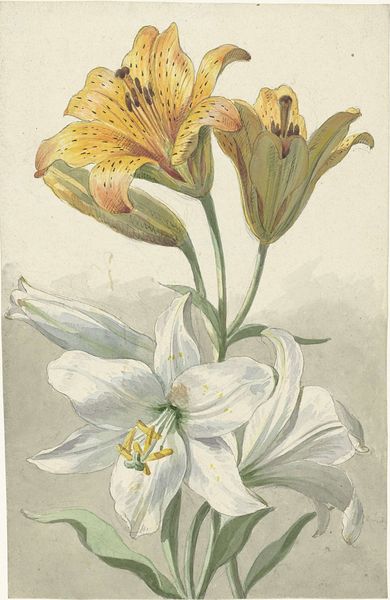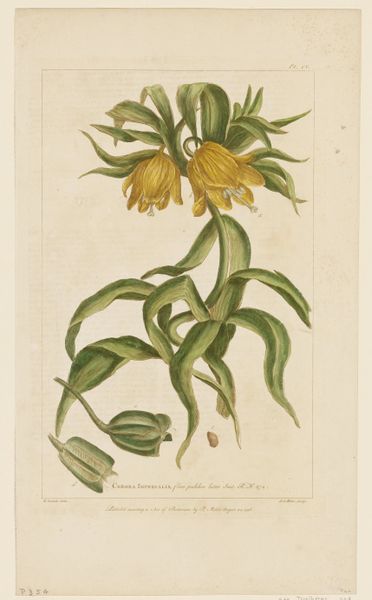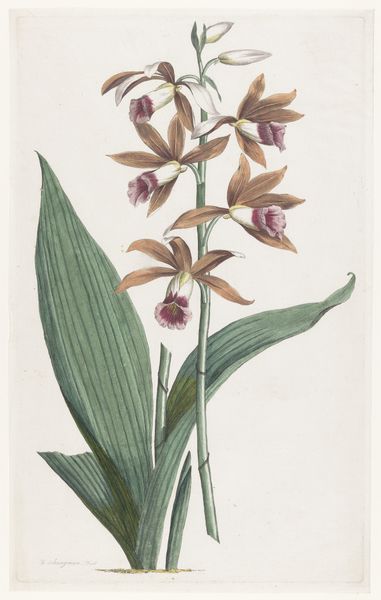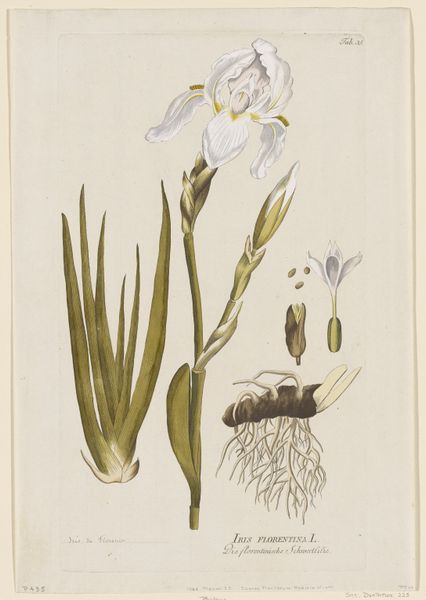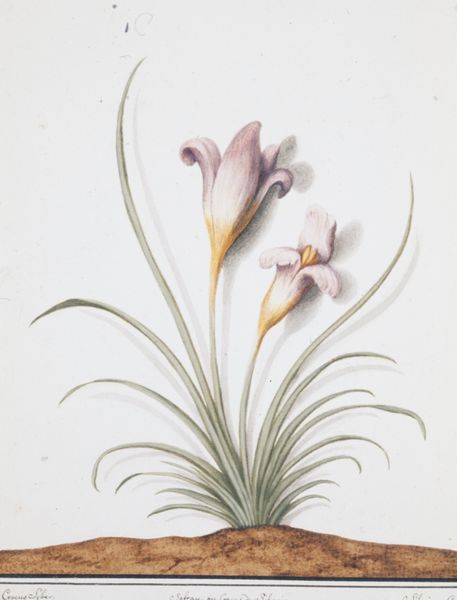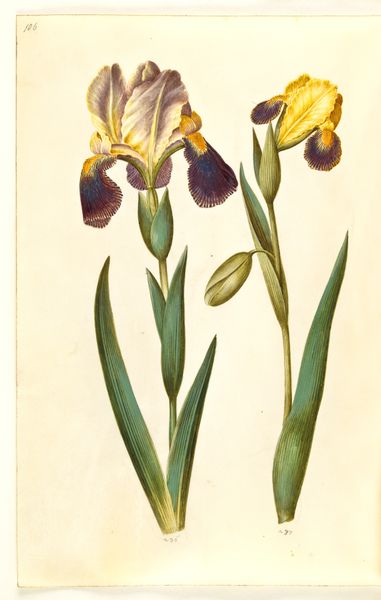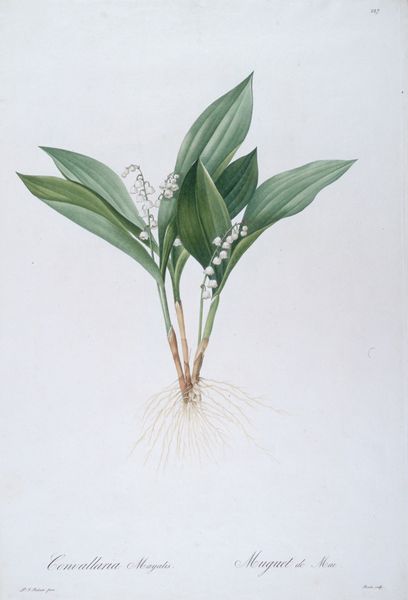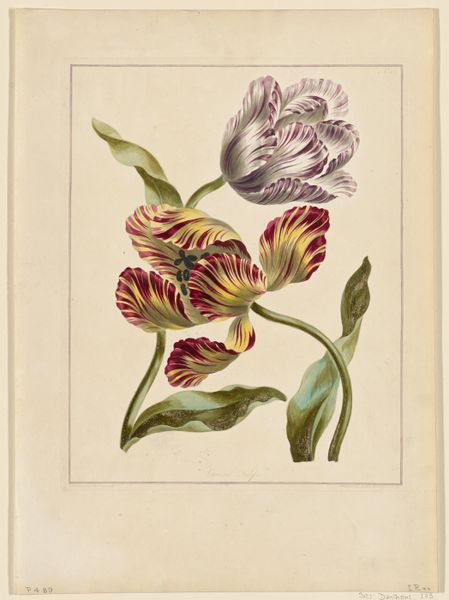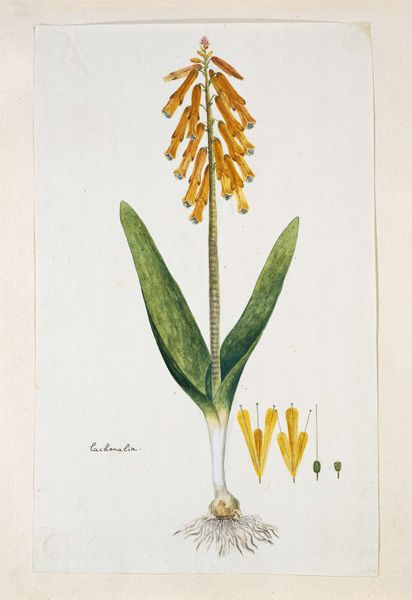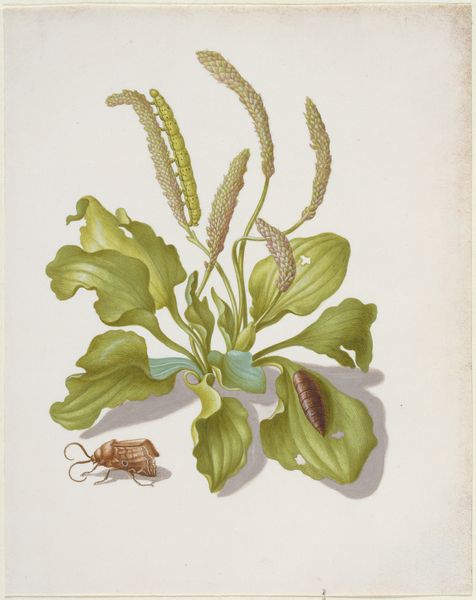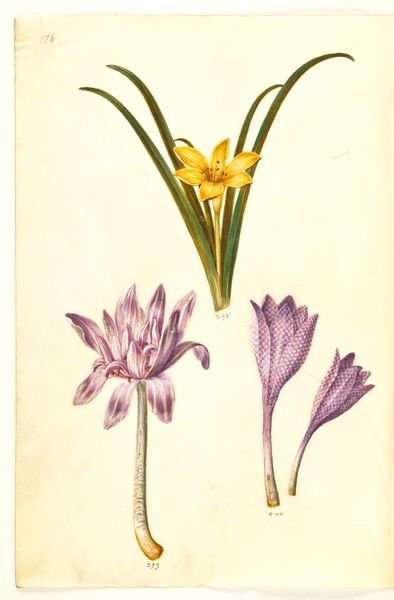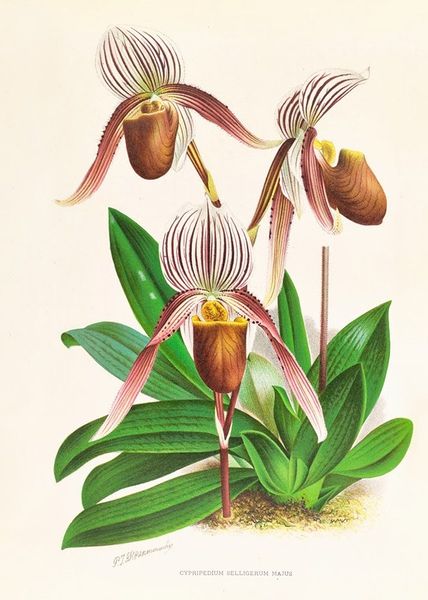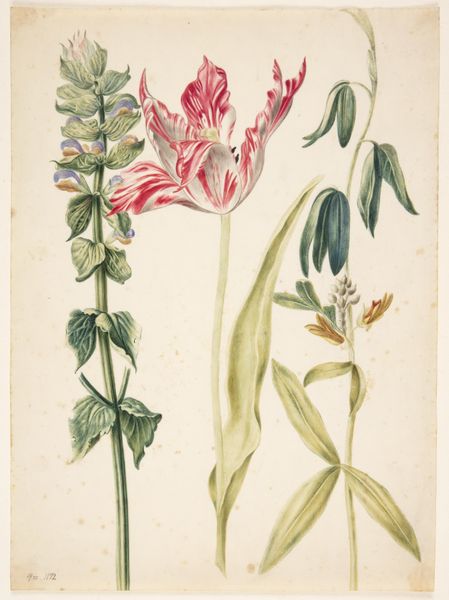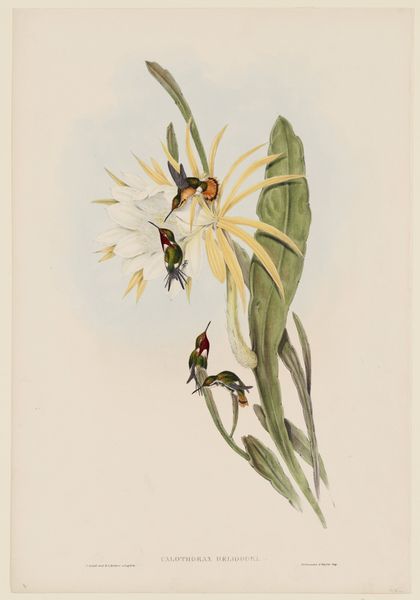
drawing, painting, print, watercolor
#
drawing
#
painting
# print
#
botanical illustration
#
watercolor
#
fluid art
#
romanticism
#
botanical drawing
#
watercolour illustration
#
botanical art
#
realism
Dimensions: 28 1/2 x 20 in. (72.39 x 50.8 cm) (sheet)
Copyright: Public Domain
Editor: This is an 1838 watercolour and print of the Tiger-Like Stanhopea, or Tiger Orchid, residing at the Minneapolis Institute of Art. The precision is astonishing. The leaves are so realistic. How do you interpret this botanical illustration from a historical perspective? Curator: Well, beyond its sheer beauty, it's a fascinating artifact reflecting the 19th-century's fascination with natural history, tied inextricably to colonialism. Botanical illustrations served a scientific purpose, documenting new species discovered during expeditions. Editor: So, this wasn’t just about pretty pictures. Curator: Exactly! This image would likely have been part of a larger project, perhaps intended for publication, contributing to the classification and cataloguing of the natural world. These images, while appearing objective, were deeply embedded within power structures. Consider who commissioned these explorations, who profited from the discoveries? Who had access to this imagery? Editor: I see, it's like the visual arm of imperial expansion, classifying and "owning" the natural world through documentation. Was realism the prevailing style? Curator: Realism was certainly valued for its perceived accuracy, vital for scientific use. However, also note the aesthetic choices; the composition is artful. These weren’t just scientific documents but luxury items often commissioned by wealthy patrons, showcasing the exotic and newly "discovered" plants from faraway lands, intended to impress and evoke a sense of wonder. Editor: It's strange to think about it in those terms – something so lovely connected to colonialism. I had thought about the skill involved, but not about its social function. Curator: Indeed, examining art like this shows us how intertwined art, science, and politics were – and continue to be! What might contemporary botanical artists do to engage or push against such histories of the field? Editor: That’s given me a lot to think about. Thanks!
Comments
minneapolisinstituteofart almost 2 years ago
⋮
James Bateman's illustrated book on Central American orchids is considered the finest botanical book executed in lithography. It was so massive, however, that it was dubbed "The Librarian's Nightmare."
Join the conversation
Join millions of artists and users on Artera today and experience the ultimate creative platform.
